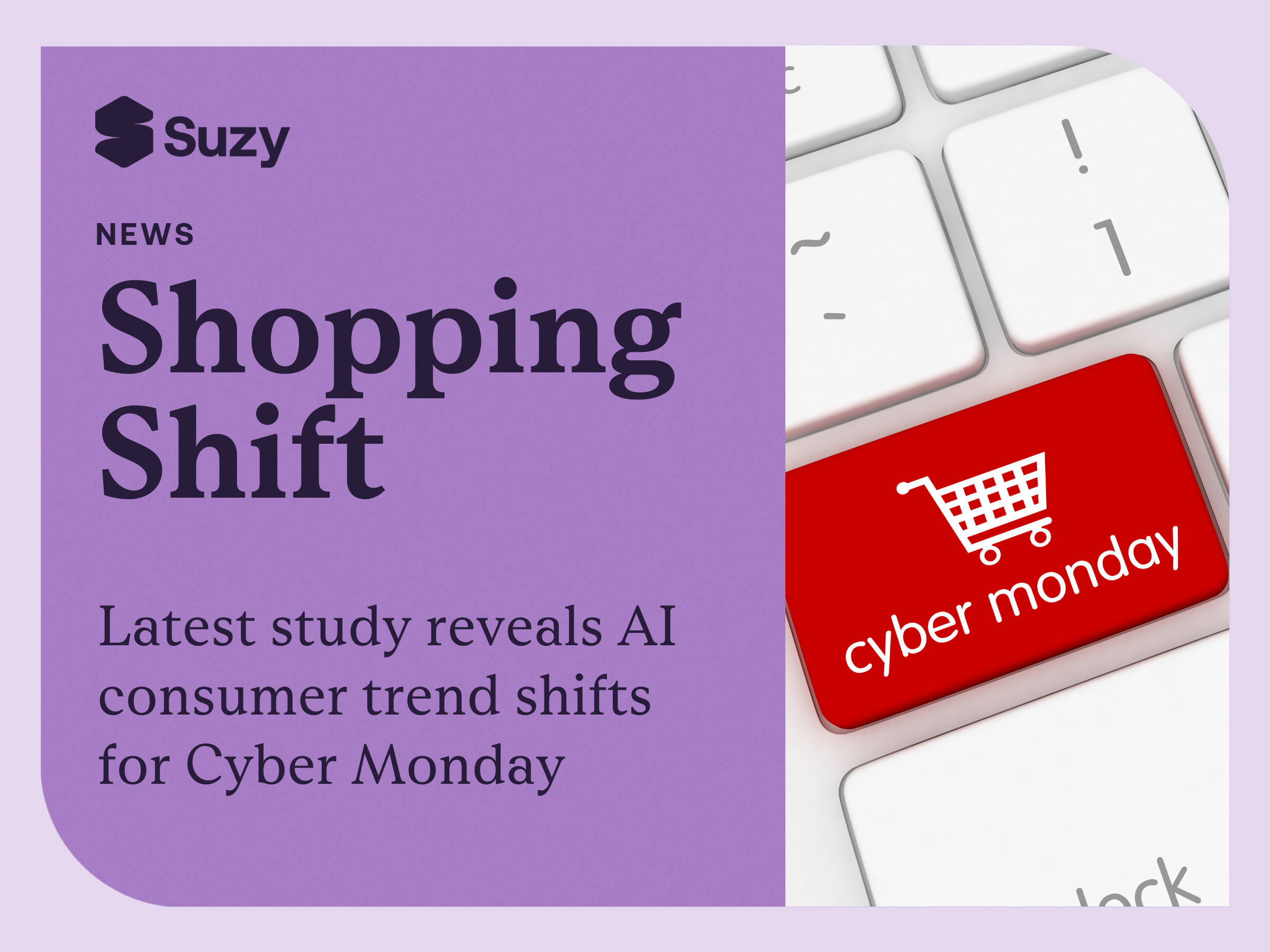By: Lauren Lanzi, VP Strategic Accounts at Suzy
Having lived on the Upper East Side of NYC for over 15 years, food delivery was a staple of my routine long before the rise of smartphones, apps, and specialized delivery platforms. Ordering in — whether for meals or groceries — was a regular habit driven by convenience and safety.
Once I moved to the suburbs of Long Island, cooking became the new cost-saving norm. As a mother of five, eating out was quite expensive no matter where we went. Restaurants became reserved for kid’s celebrations and the much needed date night!
Now an empty nester, the perpetual question of "What should we have for dinner?" falls solely on my husband and I. Food delivery, enhanced by AI, offers a compelling solution. My food delivery app anticipates my needs, suggesting dishes based on our preferences and highlights new local restaurants. It even learns my habits, sending timely notifications to prompt my dinner decisions.
The Expanding Food Delivery Ecosystem
Today’s food delivery landscape is crowded with options: Grubhub launched in 2004, paving the way for DoorDash (2013), Uber Eats (2016), and others like Seamless, Postmates, Slice, and Caviar, plus all the direct-from-restaurant apps.
So how do consumers choose one over another? Does app loyalty stem from convenience, promotions, or institutional partnerships (like those with universities or workplaces)? My own usage started with a corporate deal, while my sons gravitate toward services tied to their college campuses.
Key Brand Differentiators in the AI Era
For any delivery brand, driving user preference boils down to a few essential differentiators:
- Restaurant Availability: What exclusive or high-demand eateries does the platform offer?
- Pricing Transparency: Are service fees clearly communicated and competitive?
- User Experience: Is the app easy to use, fast, and personalized?
Understanding how these elements influence repeat use is critical to building brand loyalty – especially as AI begins to reshape expectations.
AI’s Role in Transforming Food Delivery
Artificial intelligence is redefining every part of the food delivery experience, from logistics and operations to personalization and customer service.
1. Smarter Logistics and Routing
Grubhub uses AI-driven route optimization that considers real-time traffic, weather, and restaurant prep times to deliver meals more efficiently.
2. Predictive Food Prep and Timely Deliveries
Uber Eats applies AI to predict prep times using factors like order complexity, kitchen workload, past behavior and personalized menu suggestions. This allows for more accurate delivery ETAs.
3. Generative AI in Customer Service
DoorDash is exploring generative AI for both customer-facing chat experiences and back-end logistics. It has expanded partnerships with Coco Robotics to roll out sidewalk robots in select U.S. cities, aiming to reduce delivery time and costs.
What is the future trajectory? How will this unfold for both consumers and brands?
What This Means for Consumers and Brands
We’ve moved far beyond simply placing an order from your favorite local restaurant. Food delivery is now a tech-enabled, AI-moderated experience. Even personal discovery habits are evolving – like asking friends not just what they ate, but how they got it delivered. My apps are effectively “listening” and learning, refining suggestions based on subtle cues.
From a research perspective, brands have a wealth of first-party data, but that only tells part of the story. To truly understand changing consumer behavior, brands need to go beyond behavioral data showing what consumers are doing and access attitudinal insights that reveal the deeper drivers: why consumers are making certain choices, how they feel about new experiences, and what unmet needs still exist. For example, are consumers avoiding a platform because of past service issues, or are they simply overwhelmed by choice? Are they drawn to a feature because it’s useful or because it makes them feel understood? As AI increasingly personalizes the delivery experience, brands need to stay close to the emotional and psychological drivers shaping decision-making – because the most powerful tech still hinges on human trust.
How Suzy Helps Brands Tap into Consumer Mindsets
At Suzy, we help brands go beyond surface-level data. Our research tools enable real-time surveys, AI-powered qualitative interviews, and conversational insights at scale, giving brands a direct line to the voice of the consumer.
Products like Suzy Speaks bring speed, authenticity, and scale to the table. Whether you're testing campaign creative, validating a new product concept, or exploring market white space, we help you make faster, smarter decisions with real consumer feedback.
So… What’s for Dinner Tonight?
With AI now influencing everything from restaurant discovery to last-mile delivery, the better question might be: Who—or what—is helping you decide?
.webp)







.png)